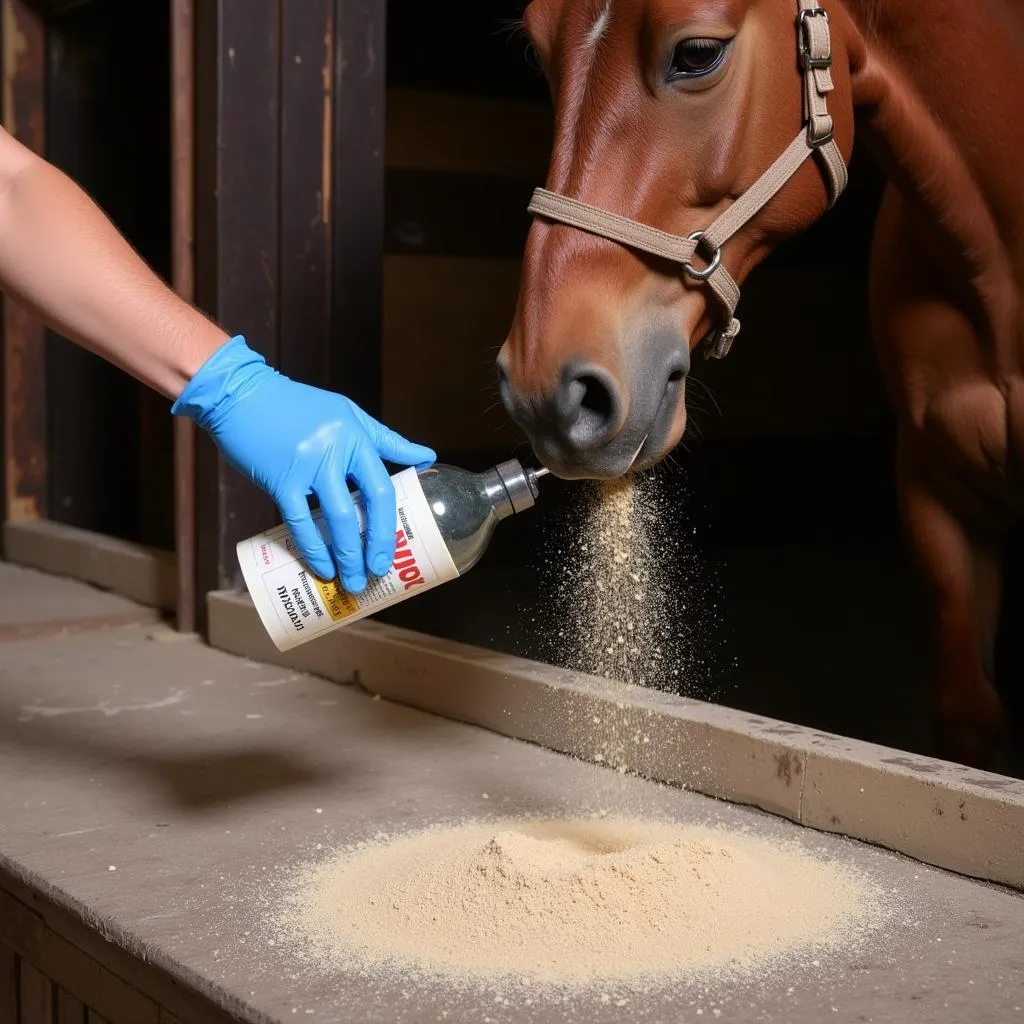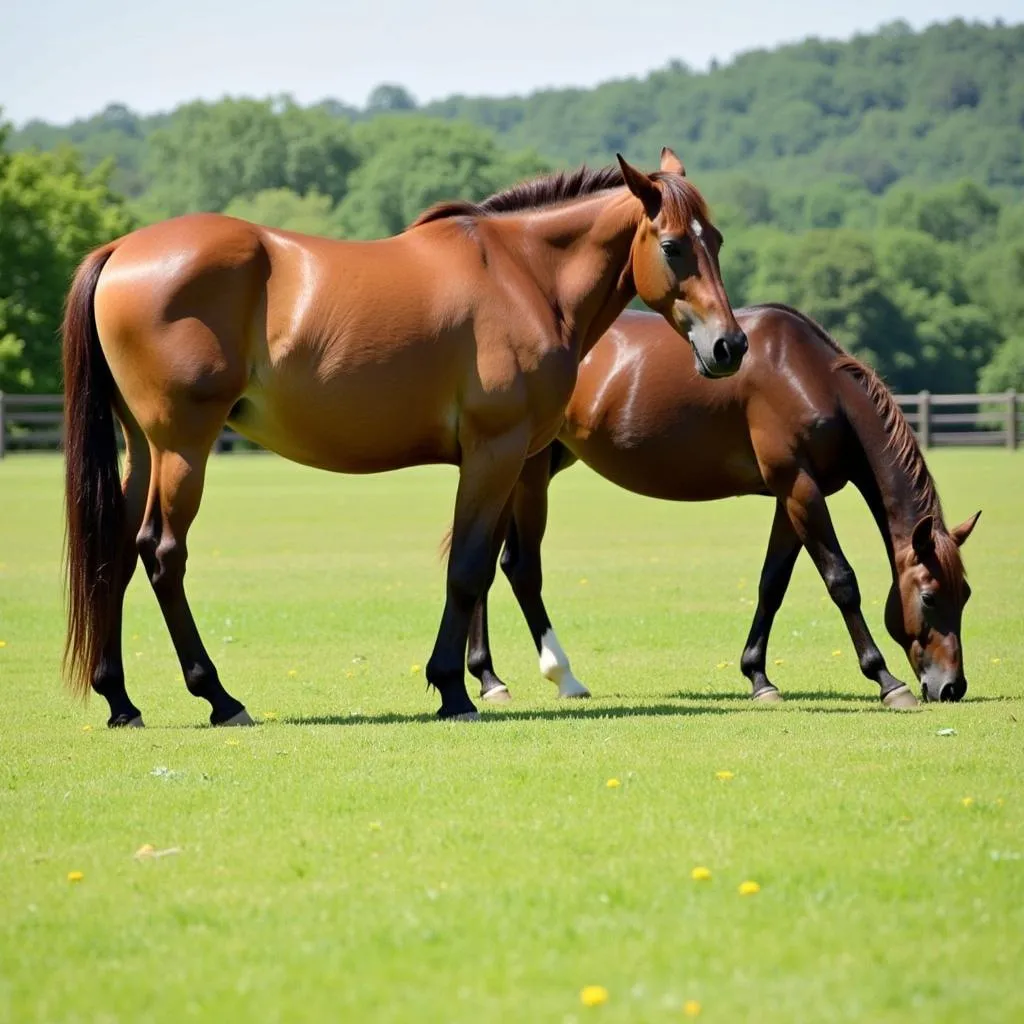Diatomaceous earth (DE) is gaining popularity as a natural method for fly control around horses. But what exactly is it, and how effective is it? This article dives deep into using diatomaceous earth for fly control in horses, exploring its benefits, drawbacks, and how to use it safely and effectively.
Understanding Diatomaceous Earth and How It Works
Diatomaceous earth is a fine, powdery substance made from the fossilized remains of diatoms, tiny aquatic organisms. While it may feel soft to us, DE is microscopically sharp. These sharp edges work mechanically to kill insects.
 Diatomaceous earth under a microscope
Diatomaceous earth under a microscope
When insects come into contact with DE, the sharp edges cut through their exoskeleton, leading to dehydration and death. DE also absorbs lipids from the waxy outer layer of insects’ exoskeletons, further contributing to dehydration.
Benefits of Using Diatomaceous Earth for Fly Control
- Natural and Non-Toxic: Unlike many chemical insecticides, DE is a natural product, making it a safer option for horses, humans, and the environment.
- Broad-Spectrum Control: DE is effective against a range of insects, including flies, fleas, ticks, mites, and lice.
- Cost-Effective: DE is relatively inexpensive compared to some other fly control methods.
- Long-Lasting: When kept dry, DE can remain effective for several months.
How to Use Diatomaceous Earth for Horse Fly Control
Always use food-grade diatomaceous earth for applications involving animals or around areas where they graze.
- Dusting: Sprinkle a thin layer of DE in areas where flies congregate, such as stalls, bedding, manure piles, and around water troughs.
- Horse Treatment: You can apply DE directly to your horse’s coat, but always use caution around their face. Avoid getting DE in your horse’s eyes, nose, and mouth.
- Feed Additive: Some horse owners add a small amount of food-grade DE to their horse’s feed to help control internal parasites. However, it is essential to consult with your veterinarian before adding DE to your horse’s diet.
 Applying diatomaceous earth to a horse stall
Applying diatomaceous earth to a horse stall
Precautions and Considerations When Using DE
- Dust Inhalation: Avoid creating excessive dust when applying DE, as it can irritate the respiratory system of both humans and horses. Use a dust mask and ensure adequate ventilation when applying DE.
- Dry Application: DE must remain dry to be effective. Damp or wet DE will not control insects.
- Storage: Store DE in a dry, airtight container to maintain its effectiveness.
- Veterinary Consultation: While DE is generally safe, it is always a good idea to consult with your veterinarian before using it, especially if your horse has respiratory problems or allergies.
Frequently Asked Questions about DE for Horse Fly Control
Q: Is diatomaceous earth safe for horses if they ingest it?
A: Food-grade DE is generally safe for horses in small quantities. However, always consult your vet before adding it to your horse’s diet or if you have concerns.
Q: How often should I apply DE for fly control?
A: Reapply DE every 1-2 weeks, or more frequently if it gets wet or blown away.
Q: Can I use DE in conjunction with other fly control methods?
A: Yes, you can integrate DE with other fly control strategies for a more comprehensive approach.
 Horse grazing in a fly-free pasture
Horse grazing in a fly-free pasture
Conclusion
Diatomaceous earth offers a natural and effective option for fly control in horses. When used correctly, it can help create a more comfortable environment for your equine companions. Remember to choose food-grade DE, apply it safely, and consult with your veterinarian if you have any questions or concerns.
Need more help with fly control on your farm or have questions about your horse’s health? Don’t hesitate to reach out to our expert team at Justus Horses USA. Call us at 0772127271, email us at [email protected], or visit our farm located at QGM2+WX2, Vị Trung, Vị Thuỷ, Hậu Giang, Việt Nam. We’re available 24/7 to assist you.